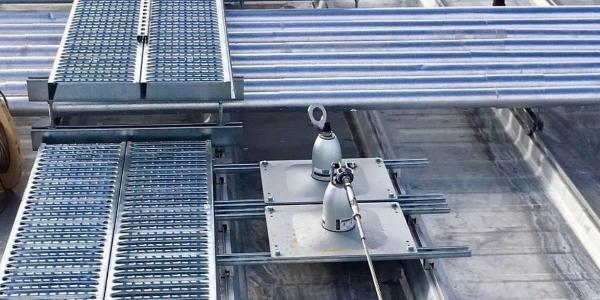Prepare to Be Safe This Winter

By Cass Jacoby, RCS Reporter.
OSHA has released winter weather guidelines so you can best prepare to be cold weather ready.
With winter weather comes slippery surfaces, strong winds and environmental cold. During this time employers need to pay extra attention to preventing illness, injury or fatalities and work towards controlling winter weather hazards. Here is how to best prepare for severe weather and the hazards that come with it.
Preventing slips and falls
The best way to prevent slips, trips and falls is to ensure there is a clear walking path in the snow and ice. Additionally, employers should spread deicer as soon as possible after a winter storm.
In situations where walking on snow or ice is unavoidable workers should be trained to:
-
Wear footwear with good traction and insulation.
-
Take short steps/walk at a slower pace.
OSHA’s Hazard Alert, Snow Removal: Know the Hazards Pamphlet, and winter weather webpages are full of helpful guidance to avoid winter weather injuries and fatalities. OSHA suggests that employers consider alternative options to avoid working on roofs or elevated heights.
Make sure you plan ahead for safe snow removal by:
-
Providing required fall protection and training when working on the roof or elevated heights.
-
Making sure ladders are used safely (e.g. clearing snow and ice from surfaces).
-
Using extreme caution when working near power lines.
-
Preventing harmful exposure to cold temperatures and physical exertion.
Cold stress
Slippery surfaces are not the only risks during winter. Employers should also be mindful of cold stress and know the wind chill temperatures so they can gauge workers’ exposure to the cold. It is important during this season to monitor workers' physical condition during tasks and to make sure that no one is working in critical wind chill conditions.
Cold weather puts workers at risk of cold stress. As wind speed increases, it causes the cold air temperature to feel even colder, increasing the risk of cold stress to exposed workers, especially those working outdoors, such as construction workers.
Cold stress occurs when the body is unable to warm itself and serious cold-related illnesses and injuries may occur. Types of cold stress include trench foot, frostbite and hypothermia. You can find more information on types of cold stress on OSHA's website as well as their Cold Stress Safety and Health Guide.
The National Oceanic and Atmospheric Administration (NOAA) Weather Radio is a nationwide network of radio stations broadcasting continuous weather information from the nearest NWS office. It will give information when wind chill conditions reach critical thresholds. A Wind Chill Warning is issued when wind chill temperatures are life threatening. A Wind Chill Advisory is issued when wind chill temperatures are potentially hazardous.
Further, employers can use the National Weather Service (NWS) Wind Chill Calculator tool to calculate the wind chill temperature.
You can prevent cold stress by properly training your workers. This training includes:
-
How to recognize the environmental and workplace conditions that can lead to cold stress.
-
The symptoms of cold stress, how to prevent cold stress and what to do to help those who are affected.
-
How to select proper clothing for cold, wet and windy conditions. Look into OSHA’s recommendations for dressing properly for the cold for more information.
-
First aid and how to call for additional medical assistance in an emergency.
Further, you should monitor workers' physical condition. Consider using engineering controls to protect workers from other winter weather related hazards, for example, aerial lifts or ladders can be used for safely applying de-icing materials to roofs.
Be sure to schedule frequent short breaks in warm dry areas to allow workers’ bodies to warm up and schedule work during the warmest part of the day. It helps to provide warm, sweet beverages and provide radiant heaters. You can read more about providing engineering controls on OSHA’s website.
Preparing for cold weather
In addition to the above recommendations for training your workers on cold stress, OSHA suggests that you train for other winter weather related hazards, for example, slippery roads and surfaces, windy conditions and downed power lines. You can read more about safe work practices that employers can implement to protect workers from injuries, illnesses and fatalities on the OSHA website.
In addition to cold stress, there are other winter weather-related hazards that workers may be exposed to when performing tasks such as driving in the snow, removing snow from rooftops, and working near downed or damaged power lines.
Refer to these free OSHA resources for more information
You can read the complete guidelines and obtain more resources on OSHA’s website.
Stay up to date with the latest roofing industry news when you sign up for the RCS Week in Roofing e-news.






















Comments
Leave a Reply
Have an account? Login to leave a comment!
Sign In